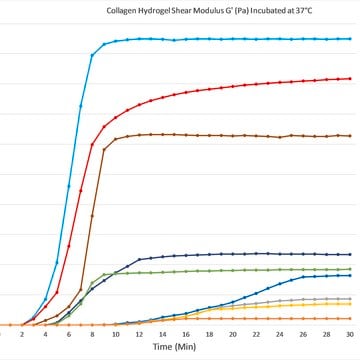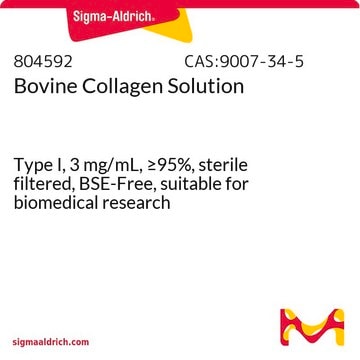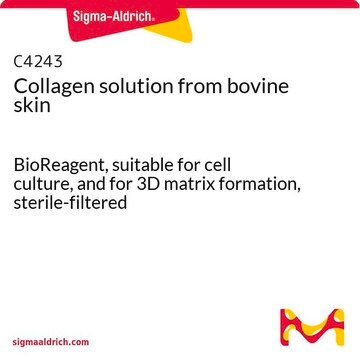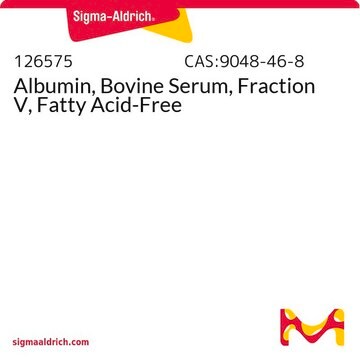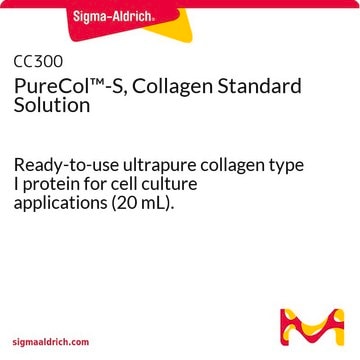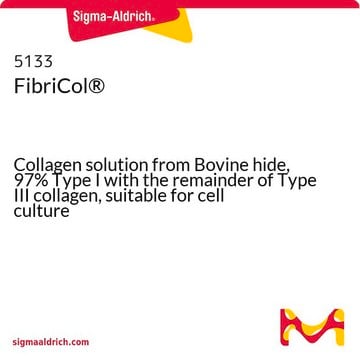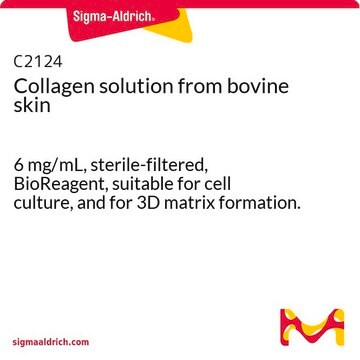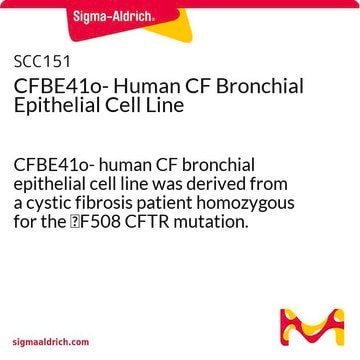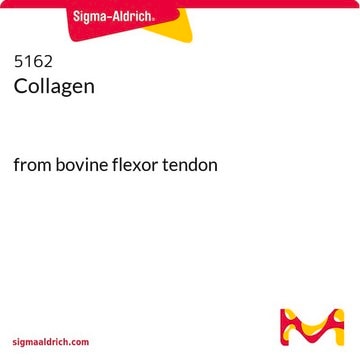5006
Bovine Collagen Type I & III
from bovine hide, powder, suitable for cell culture, PureCol™
Sinónimos:
Collagen Type I, PureCol Collagen
About This Item
Productos recomendados
product name
PureCol™, Collagen powder from Bovine hide, 97% Type I with the remainder of Type III collagen, suitable for cell culture
Quality Level
sterility
sterile-filtered
assay
99.9%
form
lyophilized
packaging
pkg of 15 mg
technique(s)
cell culture | mammalian: suitable
binding specificity
Peptide Source: Elastin
Peptide Source: Fibrinogen
shipped in
wet ice
storage temp.
−20°C
General description
It is ideal for coating of surfaces and providing preparations of thin layers for culturing cells. PureCol™, lyophilized form is not recommended for the formation of a solid gel. PureCol™ collagen is provided in user-friendly packaging for use and storage. This product is supplied as a sterile lyophilized powder.
Application
- in collagen gel preparation for the 3D sprouting assay with human umbilical vein endothelial cells (HUVEC) spheroids
- to coat Costar® Transwell® Inserts plates before cell migration assays with bladder smooth muscle cells (BMSC)
- to coat culture plates for collagen degradation assay with breast cancer cell lines
Preparation Note
Legal Information
Storage Class
11 - Combustible Solids
wgk_germany
WGK 1
flash_point_f
Not applicable
flash_point_c
Not applicable
Certificados de análisis (COA)
Busque Certificados de análisis (COA) introduciendo el número de lote del producto. Los números de lote se encuentran en la etiqueta del producto después de las palabras «Lot» o «Batch»
¿Ya tiene este producto?
Encuentre la documentación para los productos que ha comprado recientemente en la Biblioteca de documentos.
Los clientes también vieron
Artículos
Extracellular matrix proteins such as laminin, collagen, and fibronectin can be used as cell attachment substrates in cell culture.
Extracellular matrix proteins such as laminin, collagen, and fibronectin can be used as cell attachment substrates in cell culture.
Extracellular matrix proteins such as laminin, collagen, and fibronectin can be used as cell attachment substrates in cell culture.
Extracellular matrix proteins such as laminin, collagen, and fibronectin can be used as cell attachment substrates in cell culture.
Nuestro equipo de científicos tiene experiencia en todas las áreas de investigación: Ciencias de la vida, Ciencia de los materiales, Síntesis química, Cromatografía, Analítica y muchas otras.
Póngase en contacto con el Servicio técnico